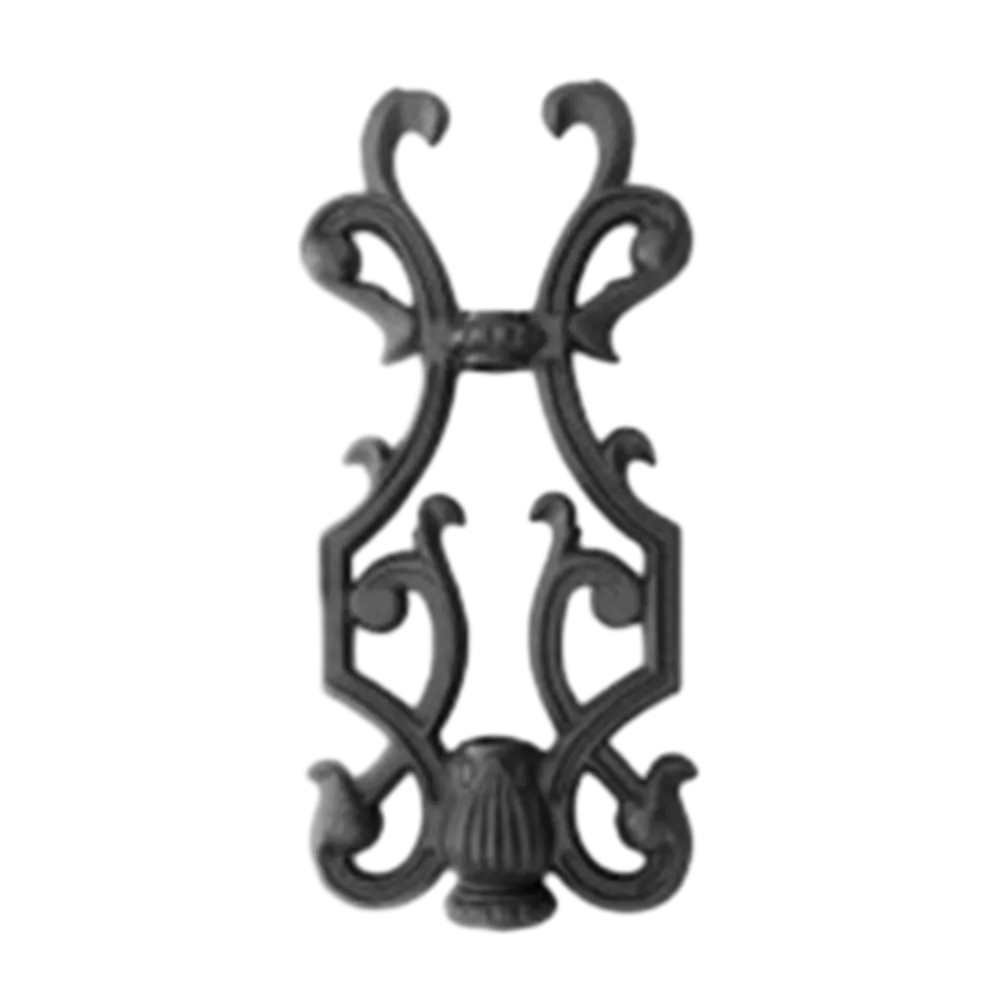Durable and Versatile Wrought Iron Components for a Variety of Construction and Design Applications
The Timeless Beauty of Wrought Iron Pieces
Wrought iron, a material known for its unique beauty and durability, has been employed in various applications for centuries. From decorative railings to intricate furniture designs, wrought iron pieces showcase a blend of artistry and functional strength. This article explores the history, characteristics, and modern-day uses of wrought iron, highlighting why it remains a sought-after material in contemporary craftsmanship.
A Glimpse into History
The history of wrought iron dates back to ancient civilizations, where blacksmiths would heat and hammer iron to create tools and weapons. Its name derives from the Old English word wraught, which means to work. Unlike cast iron, which is brittle and prone to breaking, wrought iron is malleable, allowing artisans to shape it into complex forms. This versatility made it the ideal choice for decorative art in various historical periods, particularly during the Middle Ages and the Renaissance. Ironworkers refined their techniques, bringing forth stunning pieces that adorned castles, gates, and religious structures.
Characteristics of Wrought Iron
Wrought iron is primarily composed of iron, with a very small percentage of carbon (typically less than 0.08%). This low carbon content grants the material its notable ductility and malleability. Unlike steel, wrought iron is made by repeatedly heating and working the material, which results in a fibrous structure that enhances its strength and flexibility. Furthermore, wrought iron is resistant to corrosion and rust, particularly when treated or painted, making it suitable for both indoor and outdoor applications.
One of the most appealing aspects of wrought iron is its aesthetic charm. The unique texture and finish of wrought iron pieces give them an artisanal quality that many other materials cannot replicate. The ability to create intricate designs—such as ornate scrollwork and delicate patterns—makes wrought iron a popular choice for decorative elements in architecture and furnishings.
Modern Applications
wrought iron pieces

In today's world, wrought iron continues to be celebrated for its beauty and utility. Homeowners and designers appreciate wrought iron for its ability to enhance both traditional and modern aesthetics. Common applications include
1. Railings and Gates Wrought iron railings and gates are often chosen for their security and elegance. They can be customized to reflect personal style, whether in a classic Victorian design or a sleek contemporary look.
2. Furniture The robust nature of wrought iron makes it an excellent choice for outdoor furniture such as tables and chairs. Its resistance to the elements ensures longevity, making it a practical investment for any outdoor space.
3. Decorative Elements Interior spaces can be transformed with the addition of wrought iron fixtures, such as candle holders, wall art, and lighting. These pieces serve as focal points, drawing attention and adding character to the surroundings.
4. Architectural Features Wrought iron is frequently used in architectural features like balconies, arbors, and pergolas. Its ability to support significant weight while maintaining an airy appearance makes it ideal for enhancing outdoor structures.
Conclusion
Wrought iron pieces encapsulate a rich history of craftsmanship and artistic expression. Their unique properties and versatile applications make them a treasured choice for designers and homeowners alike. As the world continues to appreciate quality materials, wrought iron stands out as a timeless option that balances functionality with exquisite design. Whether used in classic or modern settings, wrought iron remains a symbol of durability and beauty—an enduring testament to the skill and creativity of the artisans who work with it.
-
Wrought Iron Components: Timeless Elegance and Structural StrengthNewsJul.28,2025
-
Window Hardware Essentials: Rollers, Handles, and Locking SolutionsNewsJul.28,2025
-
Small Agricultural Processing Machines: Corn Threshers, Cassava Chippers, Grain Peelers & Chaff CuttersNewsJul.28,2025
-
Sliding Rollers: Smooth, Silent, and Built to LastNewsJul.28,2025
-
Cast Iron Stoves: Timeless Heating with Modern EfficiencyNewsJul.28,2025
-
Cast Iron Pipe and Fitting: Durable, Fire-Resistant Solutions for Plumbing and DrainageNewsJul.28,2025
-
 Wrought Iron Components: Timeless Elegance and Structural StrengthJul-28-2025Wrought Iron Components: Timeless Elegance and Structural Strength
Wrought Iron Components: Timeless Elegance and Structural StrengthJul-28-2025Wrought Iron Components: Timeless Elegance and Structural Strength -
 Window Hardware Essentials: Rollers, Handles, and Locking SolutionsJul-28-2025Window Hardware Essentials: Rollers, Handles, and Locking Solutions
Window Hardware Essentials: Rollers, Handles, and Locking SolutionsJul-28-2025Window Hardware Essentials: Rollers, Handles, and Locking Solutions -
 Small Agricultural Processing Machines: Corn Threshers, Cassava Chippers, Grain Peelers & Chaff CuttersJul-28-2025Small Agricultural Processing Machines: Corn Threshers, Cassava Chippers, Grain Peelers & Chaff Cutters
Small Agricultural Processing Machines: Corn Threshers, Cassava Chippers, Grain Peelers & Chaff CuttersJul-28-2025Small Agricultural Processing Machines: Corn Threshers, Cassava Chippers, Grain Peelers & Chaff Cutters












